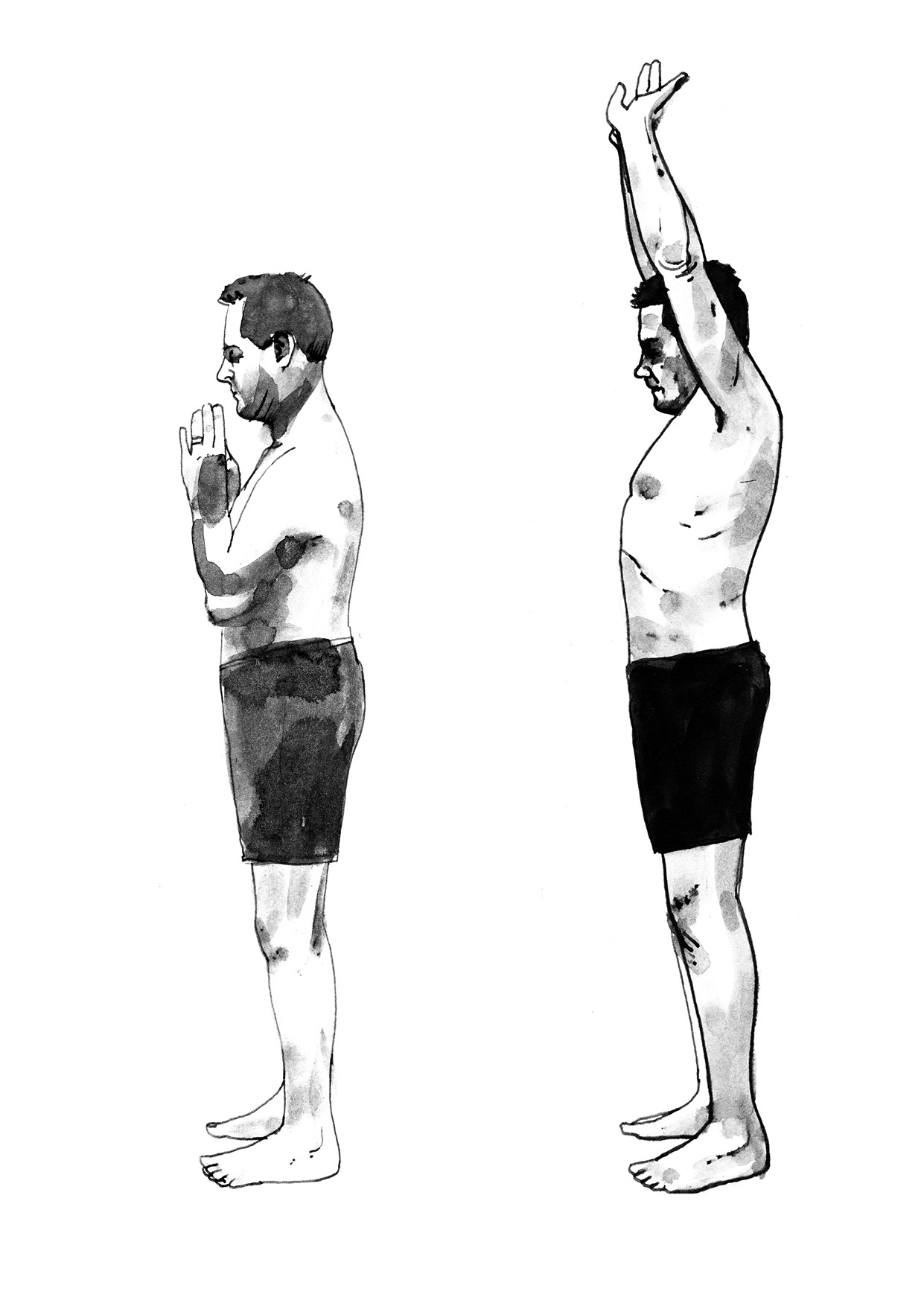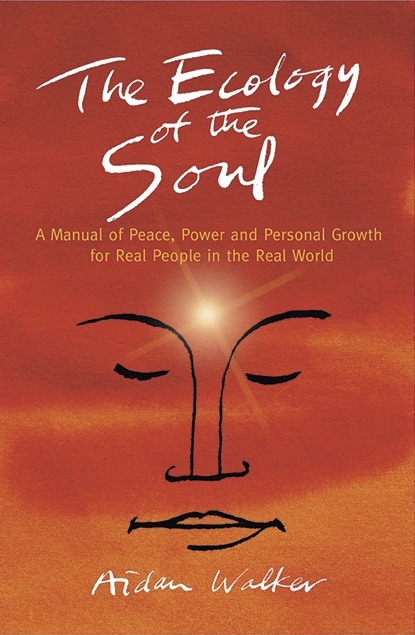Tadasana 1 and Tadasana 2: Urdhva Baddha Hastasana
 “People do not pay attention to the correct method of standing,”1 says BKS Iyengar in his comments on this basic, initial pose, from which everything else emanates. May not come as a surprise to learn that the entire focus is on inner balance, and that that inner balance expresses itself outwardly through practice of all the other asanas, and indeed in your daily life as well. Standing waiting for the green man crossing light, the train, the bus, the plane, the elevator, the post office, the morning coffee; anywhere and anyhow you have to be on your feet for more than a few minutes, bring this habit of body to mind and then apply it. Stretch, relax. To stretch, you have to relax.
“People do not pay attention to the correct method of standing,”1 says BKS Iyengar in his comments on this basic, initial pose, from which everything else emanates. May not come as a surprise to learn that the entire focus is on inner balance, and that that inner balance expresses itself outwardly through practice of all the other asanas, and indeed in your daily life as well. Standing waiting for the green man crossing light, the train, the bus, the plane, the elevator, the post office, the morning coffee; anywhere and anyhow you have to be on your feet for more than a few minutes, bring this habit of body to mind and then apply it. Stretch, relax. To stretch, you have to relax.
First things first: the feet. For proper practice of course you need to be barefoot; tadasana in shoes in the bus queue comes later. Plant them the same width apart as your shoulders, in a direct line, and rock a little back and forth on them to get them settled and spread. Stretch your toes, energize the soles of your feet, spread them out in all directions as far as you can, feel the edges, feel them tingle, feel them make live and living contact with your mat. Then the energy can rise up from that contact.
Second thing first: your breathing. All yoga asanas are driven by the breath. Every move you make should always be on the outbreath. Your breath is your most direct route possible to a calm, still, quiet mind, which is exactly what you want in all yoga and meditation. Always breathe through your nose. Focus your attention on the inner airway, way back in your head, at the back of your nasal cavity, right towards your throat. Feel the air touching the sides of the passage. Hear it inside your head, the hollow sound that could be a snore if you let it catch. (This is the section of your airway where snores come from, if they come at all.) Let it slow right down. Aim for one complete in-out cycle to take about four seconds, with at least a second’s rest before you breathe in again. Don’t force it; let it happen automatically.
Once you have got a hold of this and can hear your breath coming and going, you can start to let go your tongue. Take a look at some Google images of the throat and larynx area, and it all comes clear. The tongue is actually a huge lump of muscle, of which the long, mobile ‘tonguey’ bit is only the very top. As your breath sounds inside your head, let your tongue go and you realize how tense and active it normally is. It will take a few tries to really let go. As you crack it, you realize it is shrinking inside your mouth, taking up less space and making less saliva so you have to swallow less often. It is the simplest and best trick for quieting the mind; let go your tongue.
Your legs should be solid as a rock, but sensitive, unlike a rock. I think of them as a pair of pipes, up through which the Prān or Ch’i energy can rise. Your knees must be locked, your kneecaps pulled up at all four corners to make those legs a solid foundation, but as they settle, strong and firm, they give you such a strong base that it’s comparatively easy to tuck in your tailbone (your coccyx, if we’re being anatomical), pushing your hips slightly forward and tipping the bottom of your pelvis forward so your stomach can relax. This is crucial. It’s a very strong learned response to keep your stomach tucked in and tense. Although with the right pelvis position it isn’t going to stick out, you are nevertheless relaxing your stomach muscles and this may not chime with your idea of elegant posture. Forget about that; no one is looking at you for the moment. Let go.
Your legs are solid; your pelvis is tipped. Automatically this will open your chest, as if it were being pulled up by a string attached to your sternum, and your shoulders relax, let go and drop back. Your arms hang loose down by your sides. Your chin drops, your neck lengthens. Remember not to let your tongue tense up. Make space between the vertebrae in your neck, then up and down your spine, which is being kept straighter than normal because it’s tucked in at the very bottom, flattening out the ‘lordosis’, the natural inward curve of your spine above your hips into the small of your back (it is an area of weakness, actually). As you gain greater and greater awareness of what your spine is doing you can extend it, gain extra space between each vertebra. Bring your hands to your chest, palms together, fingers up, in the traditional prayer gesture, let your chin drop again and take seven long, slow breaths, quieting your mind the whole time.
And go straight into the Mountain version, which is basically exactly the same only with your arms up, as straight and as high as you can get them. Raise them, and as they pass your face interlace your fingers. Bring them over your head, your palms facing up, your elbows locked inwards. Try to get your palms as flat as they will go, turning the insides of your arms outwards and stretching up (gently! – don’t push!) so you can feel the stretch all the way round your arms, not just at the front. The muscles in between your shoulder blades will be shrieking. Focus on them, let them go, return the focus to your hands and palms, stretch up. It’s almost as if you are pulling yourself up with your own hands. Make yourself taller; but you have to know where to let go to be able to stretch. It’s an intense listening experience; you are listening to your body with 100 percent more attention than you normally give it. And, surprise, surprise, that attention feeds directly into your state of mind, and your consciousness.
Bring your arms down gently after your seven breaths, and get ready to go straight into Uttanasana, forward bend. The detail of which comes in the next post.
Illustrations ©Michael Munday
_______________________________
1 BKS Iyengar, Light on Yoga, paperback revised edition, 1979. ISBN: 0-8052-1031-8
